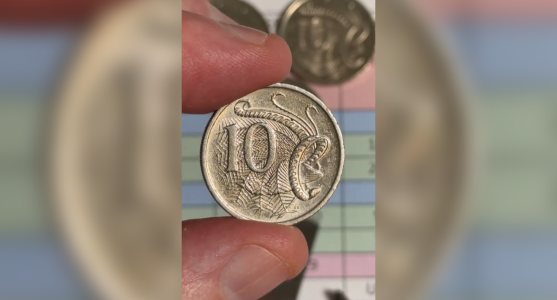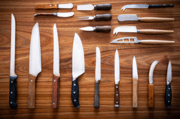You might be holding something worth small fortune—see if you have this everyday item!
By
Gian T
- Replies 0
We all love the excitement of discovering something valuable in unexpected places, whether a hidden find at a market or an overlooked treasure at home.
However, what if something seemingly ordinary could be worth far more than it appears?
It might be time to look closer at what’s hiding in plain sight—you never know what surprises could be waiting.
Coin collecting is a hobby that can sometimes become a lucrative venture, and it's not just the shiny, ancient, or exotic coins that catch the eye of collectors.
Sometimes, the everyday coins we use for parking meters and vending machines can attract a pretty penny.
Factors like mintage errors and low production numbers can turn these common coins into rare collectibles.
Michael McCauley, an Australian coin enthusiast, has recently brought to light a 10-cent coin from 1991 that could sell for anywhere between $7.50 to $10—a staggering 75 to 100 times its original value.
The secret behind this coin's worth lies in its scarcity.
The Royal Australian Mint produced only 4.8 million of these coins, and in the world of numismatics, anything under five million is considered quite rare for circulating coins.
The 10-cent piece features the iconic lyrebird design, a staple since 1966, created by the renowned artist Stuart Devlin.
While the design is standard, the low mintage makes the 1991 coin unique.
Downies Collectibles, a reputable name in the coin-collecting market, suggested that an uncirculated version of this coin could fetch up to $10, which they believe is a conservative estimate.
To put this in perspective, let's look at the production numbers from other years.
In 1988, there were a whopping 48.1 million 10-cent coins minted.
The years 1992 and 1994 saw 46.7 million and 43.7 million coins produced, respectively.
The lowest mintage year recorded was 2011, with only 1.7 million coins made, and these can command prices up to $45 if they're in uncirculated condition.
The Royal Australian Mint explained that the lower production 1991 reflected the supply and demand for that particular year.
It's not uncommon for the number of coins minted to fluctuate based on what the banks require.
But wait, there's more! There's also a 1999 10-cent coin that could be worth up to $2.20 due to a 'large head' mintage error.
This error is characterised by the letters and numbers on the face side being pushed right up against the rim instead of the usual gap.
According to Coins and Australia, the most expensive coin of this kind sold for $125, with a grading of MS-66, which is just four grades below a 'perfect' coin.
So, members of the Seniors Discount Club, it's time to become coin detectives.
Check your wallets, dig through those old coin collections, and watch for these rare 10-cent pieces.
You might have a small treasure waiting to be discovered.
If you find one of these rare coins, remember to handle it carefully and consider having it appraised by a professional to ensure you get the best possible return on your newfound fortune.
Credit: TikTok

Have you ever encountered an unusual or rare coin in your everyday change? If so, what was it, and did you find its value? Share your stories with us in the comments below.
However, what if something seemingly ordinary could be worth far more than it appears?
It might be time to look closer at what’s hiding in plain sight—you never know what surprises could be waiting.
Coin collecting is a hobby that can sometimes become a lucrative venture, and it's not just the shiny, ancient, or exotic coins that catch the eye of collectors.
Sometimes, the everyday coins we use for parking meters and vending machines can attract a pretty penny.
Factors like mintage errors and low production numbers can turn these common coins into rare collectibles.
Michael McCauley, an Australian coin enthusiast, has recently brought to light a 10-cent coin from 1991 that could sell for anywhere between $7.50 to $10—a staggering 75 to 100 times its original value.
The secret behind this coin's worth lies in its scarcity.
The Royal Australian Mint produced only 4.8 million of these coins, and in the world of numismatics, anything under five million is considered quite rare for circulating coins.
The 10-cent piece features the iconic lyrebird design, a staple since 1966, created by the renowned artist Stuart Devlin.
While the design is standard, the low mintage makes the 1991 coin unique.
Downies Collectibles, a reputable name in the coin-collecting market, suggested that an uncirculated version of this coin could fetch up to $10, which they believe is a conservative estimate.
To put this in perspective, let's look at the production numbers from other years.
In 1988, there were a whopping 48.1 million 10-cent coins minted.
The years 1992 and 1994 saw 46.7 million and 43.7 million coins produced, respectively.
The lowest mintage year recorded was 2011, with only 1.7 million coins made, and these can command prices up to $45 if they're in uncirculated condition.
The Royal Australian Mint explained that the lower production 1991 reflected the supply and demand for that particular year.
It's not uncommon for the number of coins minted to fluctuate based on what the banks require.
But wait, there's more! There's also a 1999 10-cent coin that could be worth up to $2.20 due to a 'large head' mintage error.
This error is characterised by the letters and numbers on the face side being pushed right up against the rim instead of the usual gap.
According to Coins and Australia, the most expensive coin of this kind sold for $125, with a grading of MS-66, which is just four grades below a 'perfect' coin.
So, members of the Seniors Discount Club, it's time to become coin detectives.
Check your wallets, dig through those old coin collections, and watch for these rare 10-cent pieces.
You might have a small treasure waiting to be discovered.
If you find one of these rare coins, remember to handle it carefully and consider having it appraised by a professional to ensure you get the best possible return on your newfound fortune.
Credit: TikTok
Key Takeaways
- An Australian coin collector highlighted a 1991 10-cent coin that could sell for significantly more than face value due to low mintage that year.
- The coin with the lyrebird design, produced by only 4.8 million, is considered rare and valuable among collectors, with uncirculated versions fetching even higher prices.
- The value of coins can increase due to mintage errors or rarity, with a 1999 coin featuring a 'large head' mintage error also attracting collector interest.
- Market valuations of coins fluctuate, and coins with low mintages from certain years, like the 1991 or 2011 10-cent pieces, can be particularly sought after by collectors.








